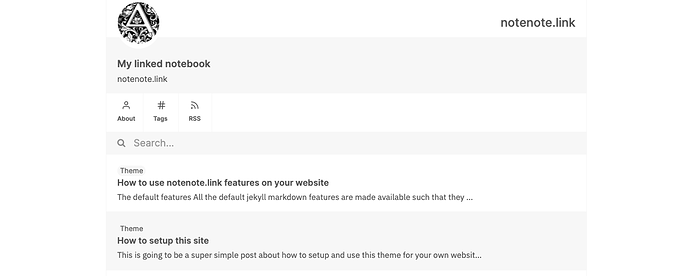Hi there !
Some of you may know the Jekyll template ‘Simply-Jekyll’ - well, it wasn’t so simple to use it with Obsidian.
After some tweaking, it is now 95% compatible (no inline-transclusion, yet !) : wikilinks work, wikilinks with alt-text work, Latex works, code is properly highlighted and indented, automatic table of content generation, text is larger, etc.
A demo is here : https://notenotelink.netlify.com
I’m transferring my notes to my site, and it works great as a CMS ! (in french  but you can figure out the design)
but you can figure out the design)
Building is fast, I’ve got around 45 notes uploaded already, with lots of complex content (tables, Latex, code, images, etc.), and it takes 3-5 seconds to build.
Check it on Github, there’s even a “Deploy to Netlify” button  :
:
If you have any questions, please ask ! Jekyll is easy to boot and configure, but I know that it may be intimidating at the beginning, so do not hesitate. Besides, it will help me improve the explanations on the website.
Ho, yeah, I’m looking for a job/internship as a Data Scientist/Analyst in the next months, so If you’ve got a need, do not hesitate to PM me.


 Looking forward to more updates - but even if there are none, this looks great the way it is
Looking forward to more updates - but even if there are none, this looks great the way it is